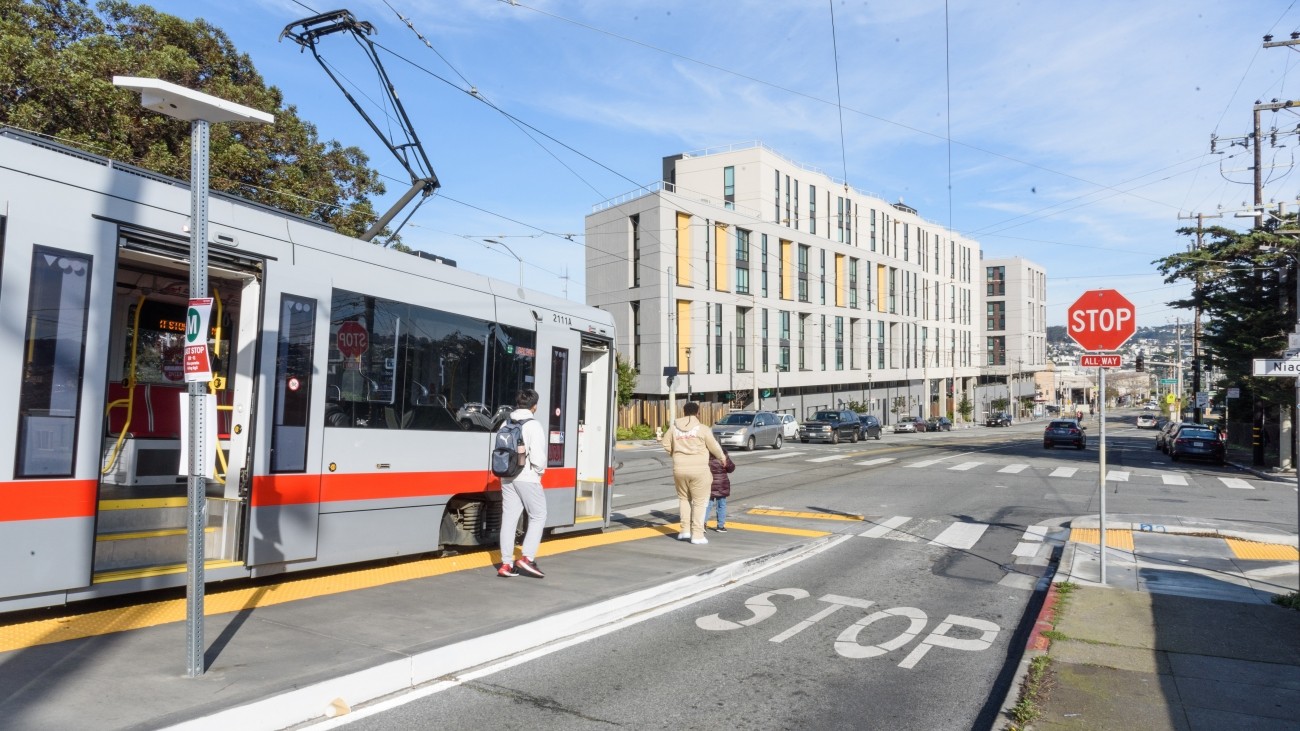
Photo by SFMTA Photography Department
California took significant steps forward in climate action and transportation funding this month, with Governor Newsom signing landmark legislation to extend the state's cap-and-invest program, while Senate Bill 63 awaits his decision.
Cap-and-Invest Legislation Signed by Governor Newsom
On September 19, Governor Gavin Newsom signed Assembly Bill 1207 (Irwin) and Senate Bill 840 (Limon), extending California’s Cap-and-Invest program through 2045. Formerly Cap-and-Trade, the program has been renamed “Cap-and-Invest” to reflect that its revenue will fund climate, community, and infrastructure projects.
The program supports California’s leadership in cutting climate pollution in the state while growing the economy and improving the quality of life. Cap-and-Invest stimulates both direct and indirect investment of tens of billions of dollars into the state’s economy with investments in local transit and rail projects, the California High Speed Rail project, clean energy, natural and working lands, affordable and sustainable housing, clean water, healthy forests and wildfire prevention and response, and more.
Senate Bill 63 Awaits Governor’s Signature
Additionally, on September 13, SB 63 (Wiener, Arreguín) passed both houses of the California Legislature and now awaits Governor Gavin Newsom's signature. The bill, known as the Connect Bay Area Act, represents a potential lifeline for the Bay Area’s public transportation systems.
SB 63 would authorize a multi-county regional transportation funding measure for the November 2026 election, allowing voters to consider approving a sales tax program that would support transit operations and capital as well as customer experience enhancements for a 14-year term. SB 63 represents a critical opportunity to address the Bay Area's pressing transportation needs through a coordinated regional approach. It was informed by a five-county staff working group, which provided technical assistance to the bill authors.
The ballot measure, if approved by voters, is estimated to generate about $1 billion annually for Muni, BART, AC Transit, Caltrain, and other transportation agencies.
The bill would also support rider-focused improvements, including fare programs, accessibility programs, transit priority, and regional mapping/wayfinding initiatives.
Revenues are anticipated to be generated by a half-cent sales tax in Alameda, Contra Costa, San Mateo, and Santa Clara counties, along with a one-cent sales tax in San Francisco County. For reference, a sales tax of one percent in San Francisco County would increase San Francisco’s sales tax rate from 8.625% to 9.625% and generate about $250 million in fiscal year 2031.
Governor Newsom has until October 12 to sign or veto SB 63.